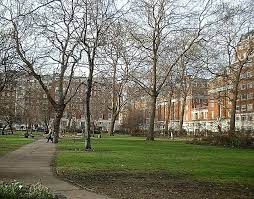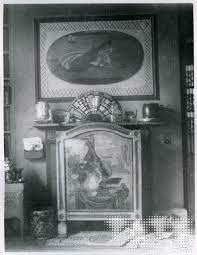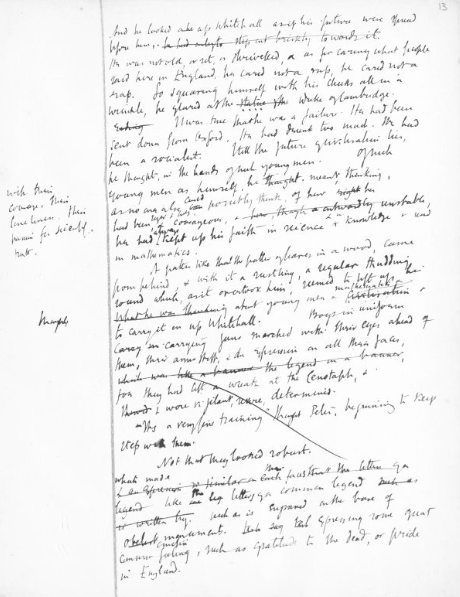When the Royal Ballet premiered Wayne McGregor’s Woolf Works last year, I left it too late, and by the time I tried to book it was sold out. Bummer.
So when it came around again, I was determined to get in early. Got tickets for the first matinee, first day. Off to London.
Having never been to the Royal Opera House in Covent Garden, I allowed plenty of time to get there. And it’s a good thing because the refurbishment construction leads to signs and arrows pointing you to the main entrance, outside Covent Garden.
Once I found it, the search for lunch began. It’s usually best to head away from the theatre, but right next door was a lovely French-looking restaurant, La Ballerina, with a set price menu that included salmon. Sold.
Lunch doesn’t usually start until 1 pm over here, so when I poked my head in ten minutes before noon, I had the place all to myself. But the closer it got to show time, the more it filled up.
After a lovely light but filling lunch, I joined the queue to find my way to my seats up in peanut heaven. Thank God there was a lift.
Part of the attraction of this trip was a chance to see the Royal Opera House for the first time. I can report that it looks exactly like a very royal opera house. More surprisingly, my cheap seats turned out to be relatively comfortable, and gave a clear view of the ornate ceiling, the filled seats and, most important, the stage.

The Royal Opera House from the other side
Although about half the audience was the usual stale, pale and female arts matinee crowd—including me—I was thrilled to see so many who didn’t fit any of those demographics. On either side of me were Asian university-age students. A quick scan of the house showed a younger average-age crowd than I had expected. Was the attraction Virginia Woolf’s works? Or the original score by Max Richter? Or was this the usual Royal Ballet Saturday afternoon audience?
Although everywhere I had been on this London weekend was freezing cold, inside and out, here, settling in for a three-hour ballet with two long intervals, the theatre was a bit warm. And you who know me know, I’m never too warm.
The first piece—I Now, I Then—was based on Woolf’s 1925 novel, Mrs. Dalloway, one of my favorites. As in the novel and film The Hours, Clarissa and Virginia were merged into one. The movement between the younger and older versions of Virginia in print dresses and her husband Leonard in tweedy suits visually echoed the novel.

I now, I then, Act One of Woolf Works
During the 30-minute interval—intermission to my fellow Americans—I tried to read the detailed program [£7; you can order ahead with your tickets]. Was the tiny type another way to attract a younger audience? Because anyone over 40 wouldn’t be able to read that in any light.
The middle piece—Becomings—based on Orlando, Virginia’s 1928 tribute to her lover, Vita Sackville West, started off quite darkly. And stayed that way. I could see the dancers who were downstage in spotlight, but there were others back in the shadows. Not waiting to come on dancing, but dancing. Why, if we can’t see them? This was contrasted with the amazing laser effect at the very end. Could have spread that illumination out a bit more, if you ask me.
Between the warmth and the darkness, I could feel my eyelids doing that dip they do when you’ve been driving too long. The second interval allows 30 minutes to get up and walk around. A chance to see the building and have a shot of that standard British theatre-accompaniment, a yummy, tiny tub of ice cream.
Back in our seats a half hour later, the young ones around me were pulling up reviews of the ballet on their phones. Thank God they haven’t been looking at them during the show.
The final section—Tuesday—based on The Waves, opens with a huge video mural across the length of the stage of…waves. It’s quite effective, but the waves seem to stop waving after the first few minutes.

Tuesday, Act Three of Woolf Works
In this piece, the dancers are much better lit. And the voice of Gillian Anderson gives an emotional reading of Woolf’s last writing, the note she left behind for Leonard before walking into the River Ouse in Sussex:
…You have given me the greatest possible happiness. You have been in every way all that anyone could be. I don’t think two people could have been happier till this terrible disease came…’
But if you are that happy, why take your own life? Why? I’m sure Leonard asked the universe this same question when he read that note. Now we can understand this as an indication of how mental illness is indeed a ‘terrible disease.’
As the dance ends, the audience bursts into applause. Unlike the earlier pieces, the finale includes bows from all involved. First the young kids. Bow. Then the members of the company. Bow. Then the principals. Bow some more. Then everybody! More bowing. More clapping. A bit more bowing. Did we forget anyone? More bowing.
Done.
A lovely afternoon in a beautiful theatre, with enthusiastic companions, and beautiful art.
Woolf Works is going to be broadcast to theatres in the UK later this month. But I highly recommend taking in real, live, theatre.
To walk with me and the ‘Such Friends’ through Bloomsbury, download the Virginia Woolf and the Bloomsbury Group audio walking tour from VoiceMap.

Woolf Works poster












